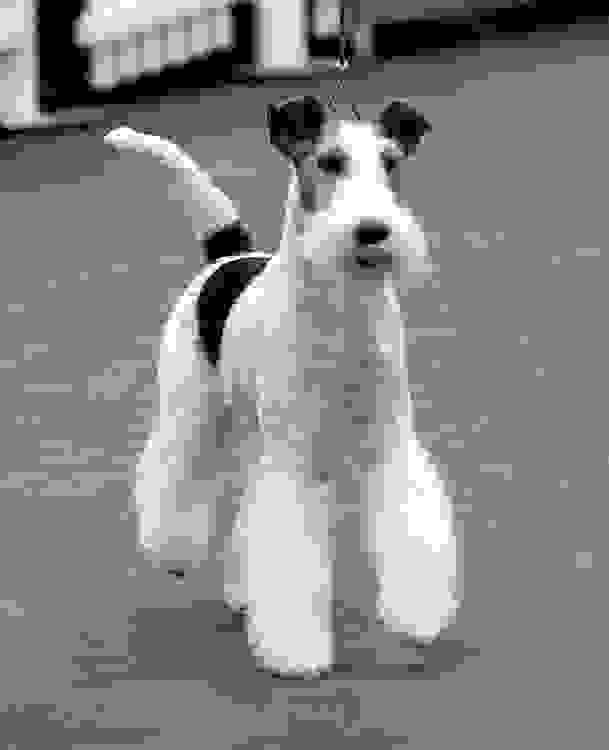A few words on molecular tools
Here is an article I wrote with Zeev Trainin for FCI a few months ago, The original draft can be found here.
Over the last 20 years, genomics has evolved from a promising field to the main area of study for most animal breeders. Dog has been one of the first mammal species whose genome has been completely sequenced, already in 2005. In parallel, an increasing number of genomic tools have been developed to assist dog breeding. Without going into details about their developmental processes, eventually our interest should be focused more on the current and potential use of these tools, not only from the aspect of efficacy, but rather from the economic and ethical point of view.
First, it should be reminded that variation within the genome is not always linked to diversity in the phenotype. Some mutations that occur may not have a specific impact. When those mutations are not located close to a selected gene, they are not under selection and therefore are considered as neutral. The importance of its mentioning relies on the fact that genomic tools can be differentiated into two categories, focusing either on neutral variation, or on functional one. While the aim of analyzing functional variation is to detect or predict phenotypic traits such as coat color or occurrence of diseases, the goals of investigating neutral variation is related more to the assessment of differentiation and diversity among and within populations and individuals.
Neutral Variation
Tools and tests related to neutral variation are generally based on molecular markers (locations on a chromosome where some variation can be observed through an automatized procedure), which have been chosen to be as representative as possible of the whole genome of the population studied. Increasing the number of markers used will increase the precision (and the cost) of the analysis, while the required precision depends on the aim of the tool:
- Genetic identification and parentage testing is by far the most common genetic test in dog breeding. It requires in general only a limited set of markers to insure differentiation among individuals, and compatibility between two parents and their putative offspring. The international ISAG (International Society for Animal Genetics) panel for dog identification includes around twenty microsatellites markers. Most important is the sharing of common marker sets among the various laboratories across the world, in order to be able to standardize all results.
- Considering that genetically related dogs share more alleles than unrelated ones, initiated the development of various tools measuring the relation between breeds and individuals. In the last few years, some laboratories have commercialized genetic tests that are able to identify breeds at the origin from a given mixed-breed dogs. The efficacy of such test is dependent, of course, on the number of markers used (which should be much more important than the number for genetic identification), as well as to the genetic background of the dog. It is relatively easy to unravel the origins of a first generation cross, but things become more complicated when the ancestors of the mixed dog come from rare breeds ten generations back.
- Following the same principle, multiple additional uses of neutral variation can be considered. For instance, breed assignation could be used to check whether a dog without pedigree, showing the appearance of a certain breed, really belongs to that breed. This could be of interest for opening registries to lines that are no longer registered, enlarging (therefore) the genetic variability within the breed.
- At the population scale, neutral markers have also been used in multiple studies to assess genetic relations across breeds, in relation to their history for instance (vonHoldt et al. 2010). In practice, this could be used, to determine the breed to be used in order to reintroduce some diversity within a given breed (Farell et al. 2015). For international breed recognition, FCI is now requiring a genetic study for assessing the degree of genetic originality of a candidate breed.
- Finally, it can be of interest to measure the level of genetic variability shared by a population or an individual, considering, for instance, the links between genetic variability and health. However, the precision of such analysis relies strongly on the choice of markers and individuals, while until now, no specific procedure exist for such a purpose. Moreover, the links between genetic variability and dog health are still unclear, this question requiring further studies.
Functional variation
The main interest of clubs, breeders and owners should probably be focused on the tests considering functional variations. Here the precision is in general not related to the number of markers used, as most of these tests consider only a single area of the genome. Yet, the marker used does not always correspond to the mutation of interest, but maybe located in an area close to the mutation. Also, the trait of interest can be of complex inheritance mode (several genes, influence of environment). These different parameters can reduce the efficacy of the various functional genomic tools.
Issues and concerns
During the last decades, hundreds of mutations were identified in dogs, concerning morphological, health or other traits. A growing number of commercial tests have been developed following these discoveries, and recently, testing packages have been proposed to breeders and owners, involving more than 100 genetic tests in one panel. This raises multiple questions for dog breeding.
First, given the number of existing tests, it may be difficult for breeders and owners, to identify the specific ones necessary for their own context. As the incidence of disorders may vary across subpopulations, the use of a given test can be recommended for a given national population, while in another country it may be of no interest, as the same mutation is not being under segregation there. There is a need for guidelines in that extent, being concomitantly updated, according to health situation or to availability of new tests.
Also, priorities should be set at the breed scale, as (i) inadequate selection programs against a given disease may have deleterious consequence on the breed health, increasing incidence of other diseases, and (ii) those genetic test may have a non-negligible cost, and imposing too much the use of genetic tests may in some cases be counter-productive, pushing breeders away from the breed. The test(s) to be used, as well as the constraints or incentives to be set, are depending on the population size, as well as the incidence, inheritance mode and health consequence of the disease.
Hence, breeding strategies should be developed according the context specific to each breed (Leroy and Rognon 2012). In order to answer these various concerns, the establishment of guidelines for clubs and breeders is of upmost importance. This is one of the purposes of the DogWellNet platform launched during the second Dog Health Workshop in February 2015. The brain trust which could initiate such guidelines should be comprised of researchers, veterinarians, welfare associations, breeders, clubs and of course FCI, which should have a major role in their coordination and implementation.
Beyond the growing number of genomic tools and their consequence for dog and breeding, one crucial question remains concerning the role of the breeder in future years. Genomics will be, and actually already is, one key component in dog breeding. Yet, dogs cannot be reduced to a pack of genes, which are combined at will. A lot about genetics remains undiscovered, and in most traits breeding environment will continue to have a role in shaping dog health, morphology and behavior. Genetic tools are, and will continue to serve as complementary instrument to the breeders. We still will need breeder’s skills to work on improving and raising our dogs.
References:
Farell L.L., Schoenebeck J.J. et al. (2015) The challenges of pedigree dog health: approaches to combating inherited disease. Canine Genetics and Epidemiology 2015, 2:3
Leroy G., Rognon X. (2012) Assessing the impact of breeding strategies on inherited disorders and genetic diversity in dogs. The Veterinary Journal 194(3) 343-348.
vonHoldt B. M., Pollinger J.P. et al. (2010) Genome-wide SNP and haplotype analyses reveal a rich history underlying dog domestication. Nature 464, 898–902.
Credit picture: I. Horvath
- Tests of genetic diseases evoke most interest, of course, using functional variation tools for dog breeding. In the simplest case, such test allows the identification of carriers and potential affected individuals, which is, for breeders, more than useful, as it enables the right choice of their reproducers. Hence, it may help clubs to apply adequate breeding strategies. Yet, it has to be stated that the situation is not always that simple. There are examples where, for instance, two forms of a given disease are presented, having two different mutations behind (and only one has a test). Moreover, in multiple cases, in which a more complex inheritance of the disease occurs (incomplete penetrance, several genes involved) the efficacy of the tool may be affected. For instance, in case of incomplete penetrance, only a given proportion of individual carrying the deleterious allele(s) express the disease: the genetic test has then to be considered as a susceptibility test.
- In some cases, some diseases (hip dysplasia or patellar luxation for instance) are due to a combination of environmental and genetic factors (Farell et al. 2015). Here also, some specific tools could be used based on the principle of genomic evaluation, combining genomic, phenotypic and environmental information, to provide an index estimating the genetic susceptibility for an individual to develop a given trait.
- Of course, all identified functional mutations are not necessary related with inherited diseases. Several tests have been developed in relation to coat colors, and some mutations are related to dog size or skull shape. These tests may be of some interest for the choice of candidate reproducers. As some mutations have been identified to be associated with abnormal behavior, we may expect, in years to come, commercialization of genetic tests focused on behavioral traits.
 Donate
Donate


1 Comment
Recommended Comments